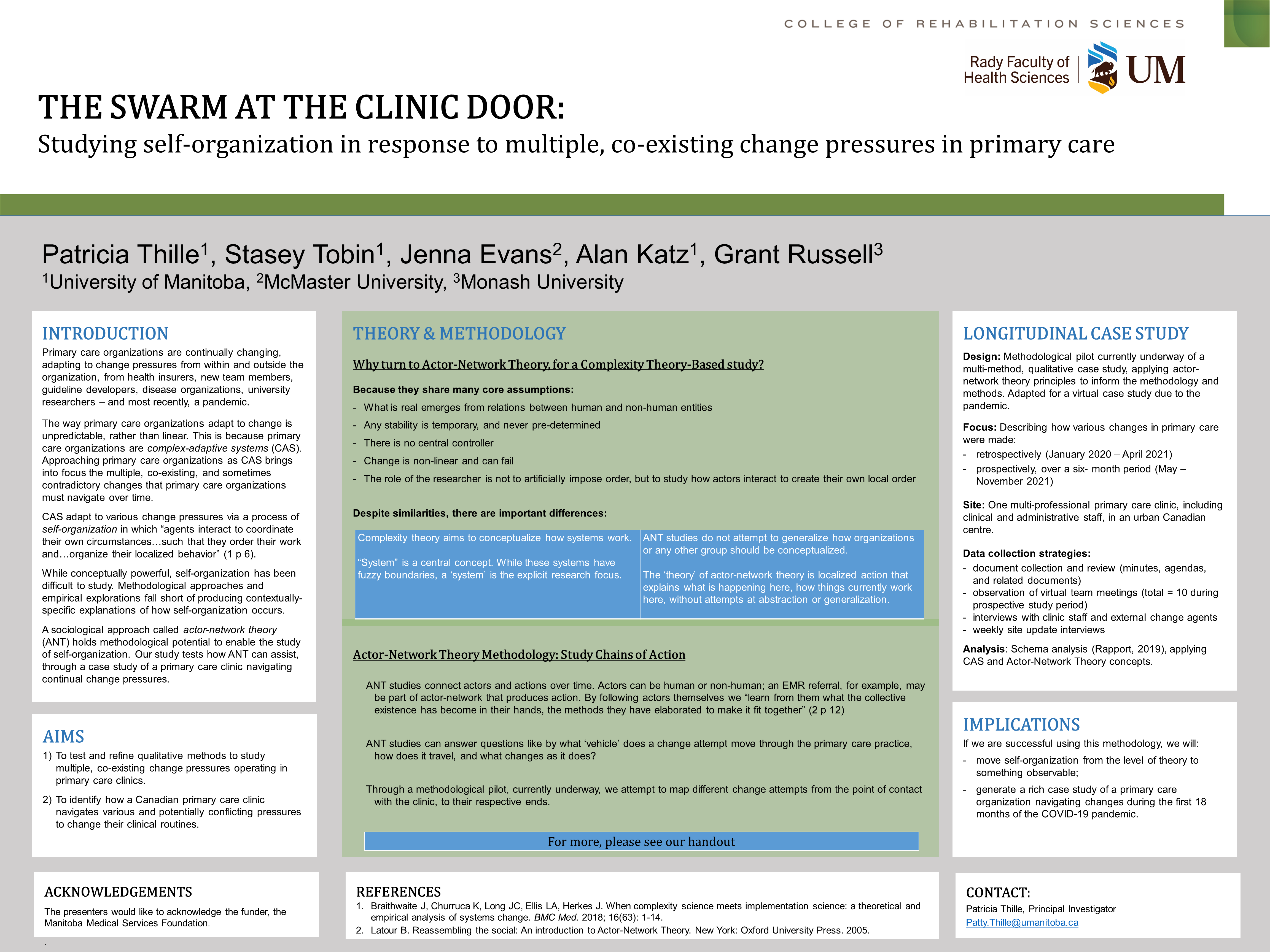PRP091: The Swarm at the Clinic Door: Studying primary care self-organization in response to multiple, co-existing change pressures
Patricia Thille, PhD, PT; Alan Katz, CCFP, MBChB, MSc, MBChB; Jenna Evans, PhD; Grant Russell, MD, PhD, MBBS, FRACGP MFM; Anastasia Tobin, BSc, MHsc

Diane Harper
harperdi@med.umich.edu 11/21/2021thank you for sharing this with NAPCRG. I am interested in seeing how this work develops.